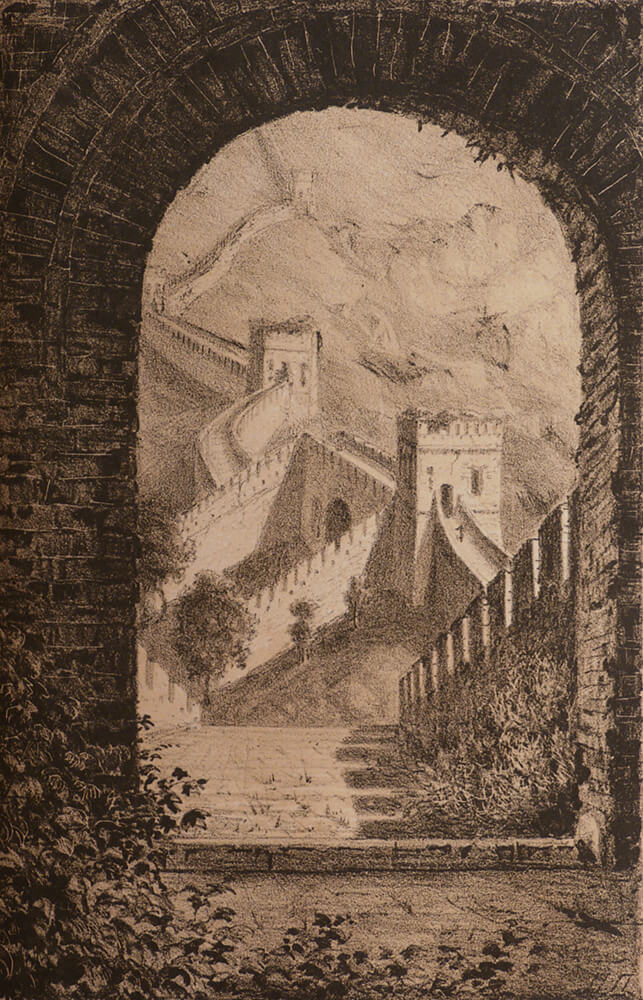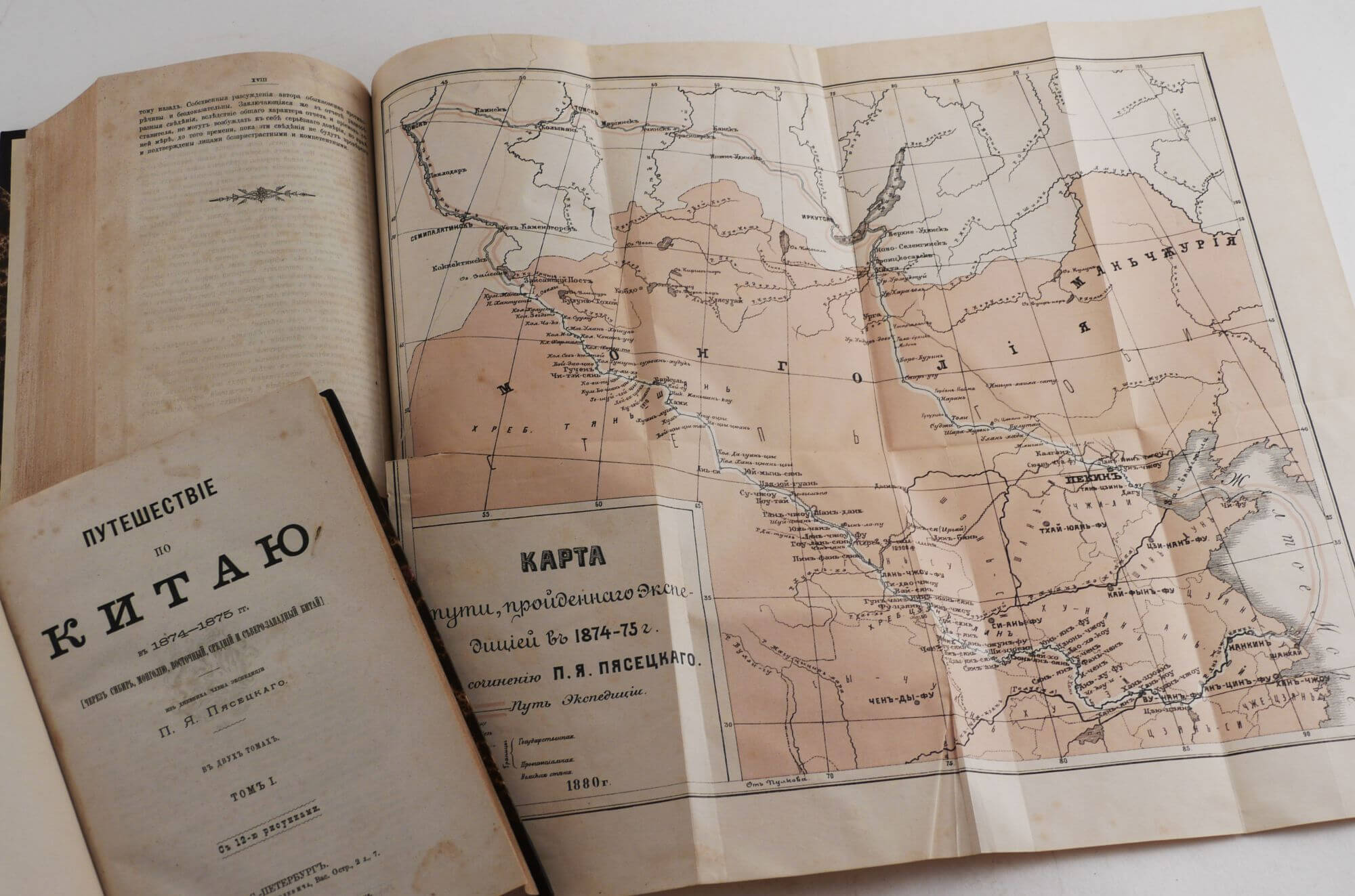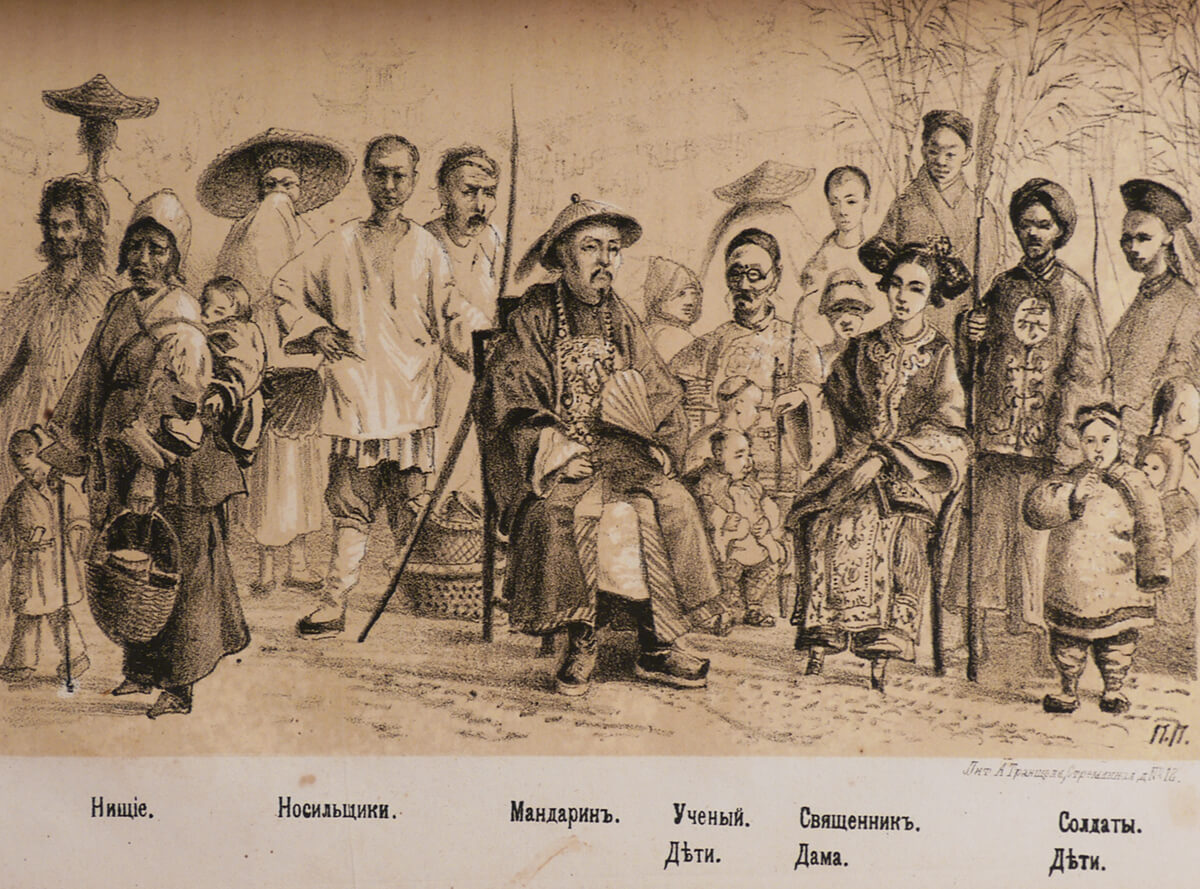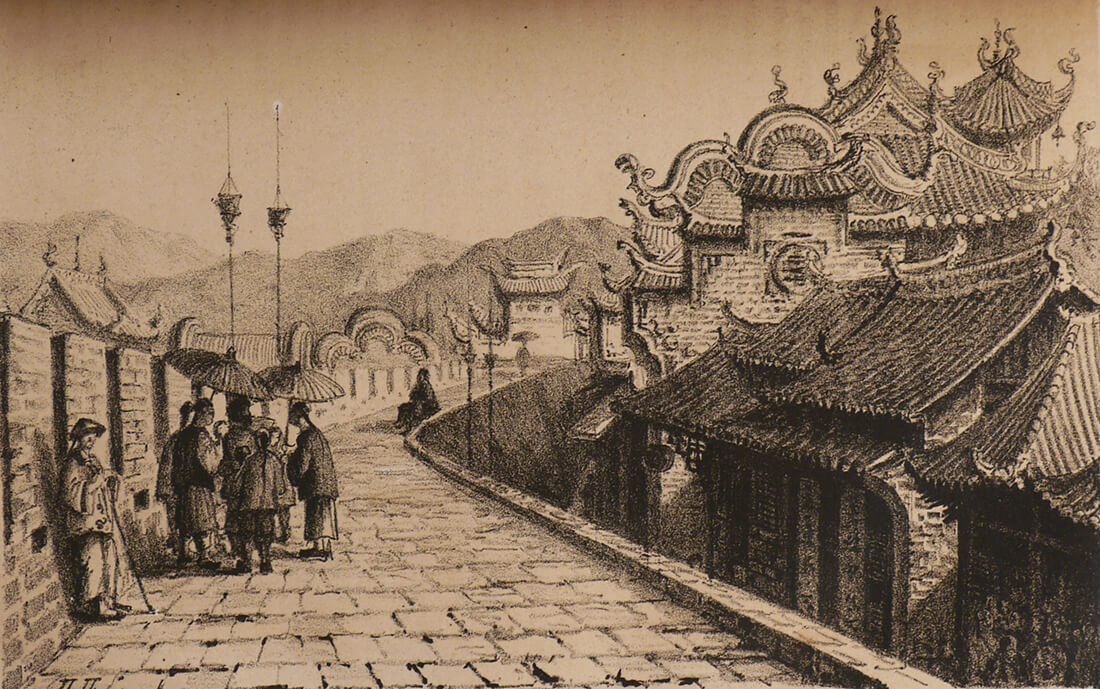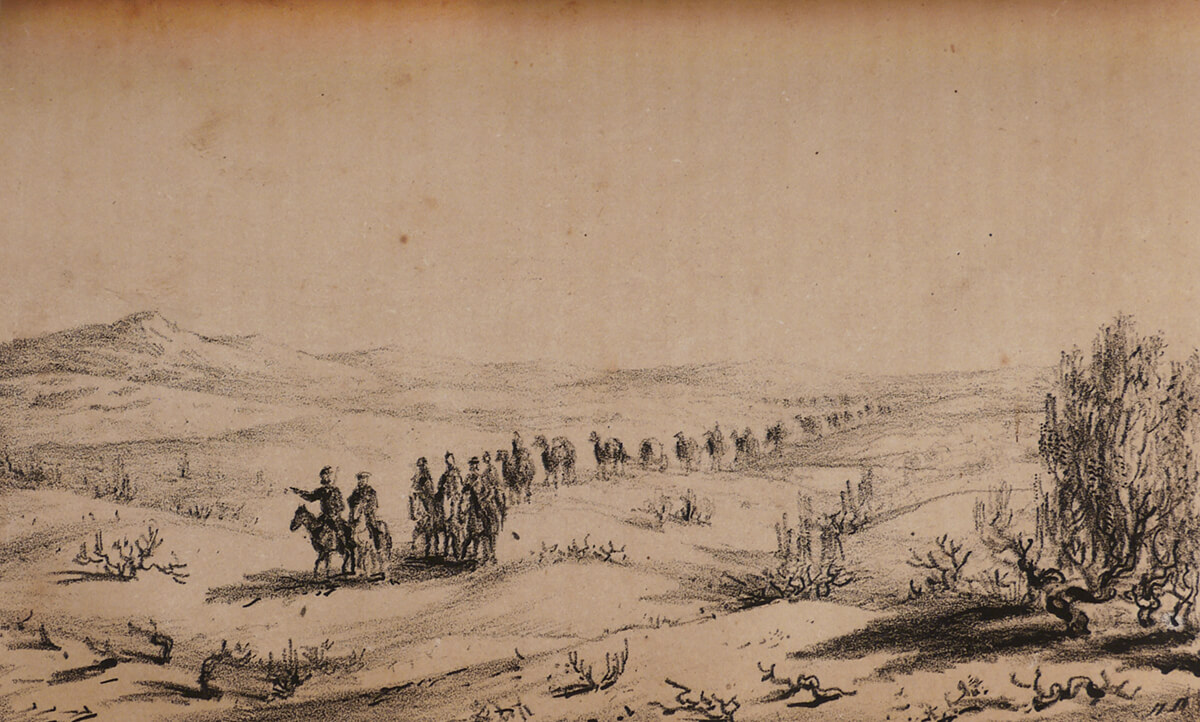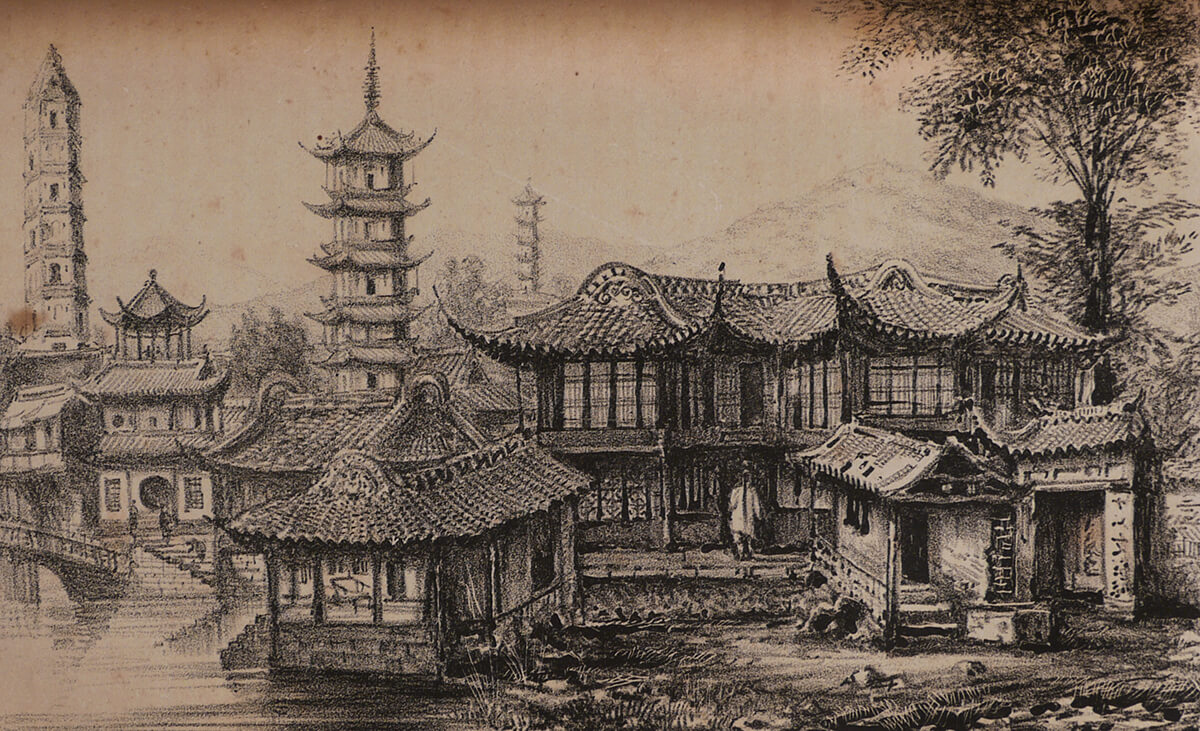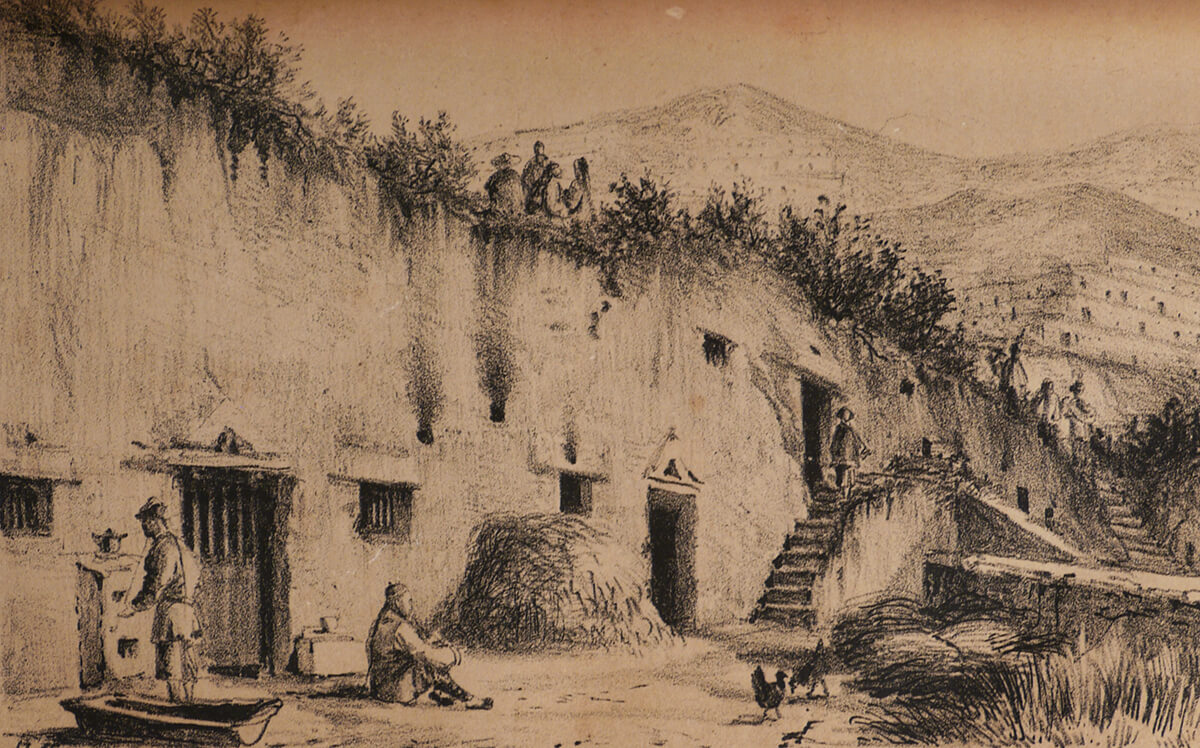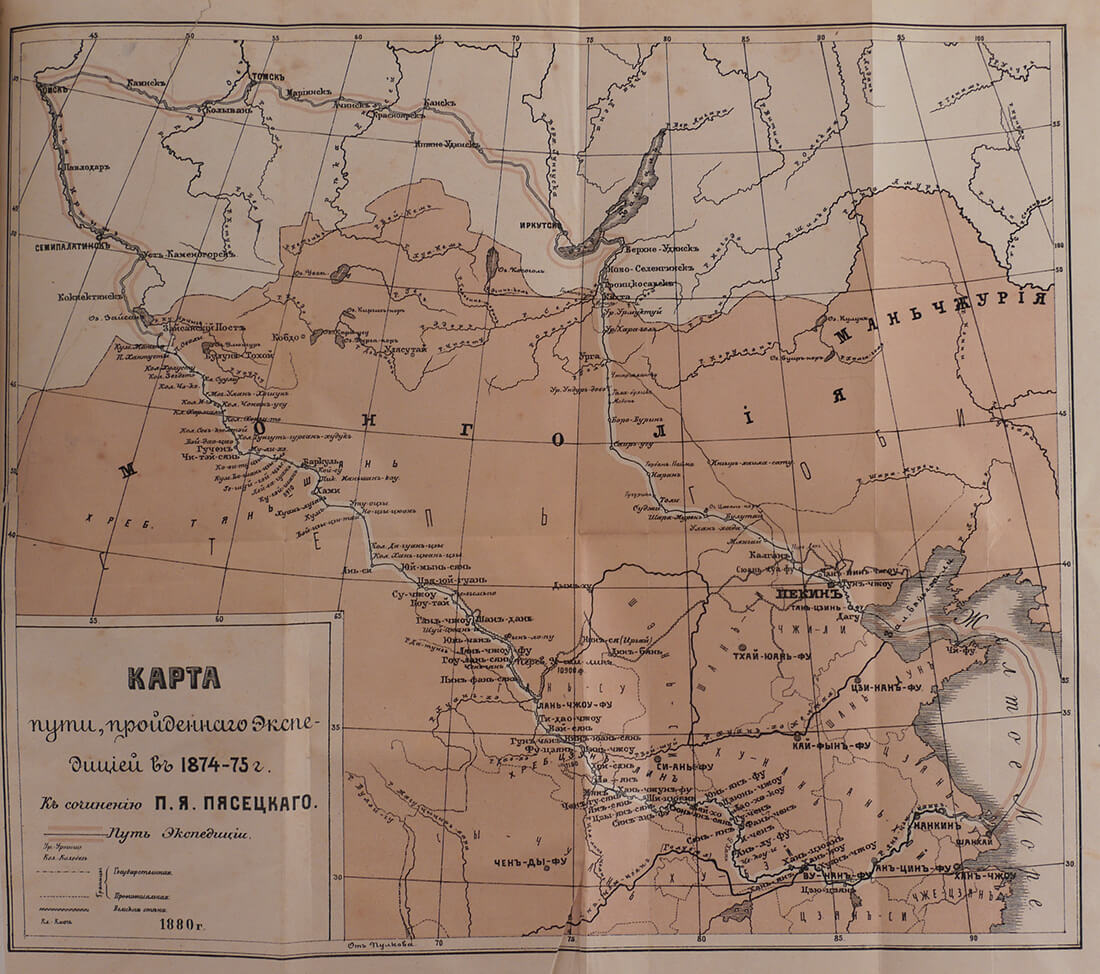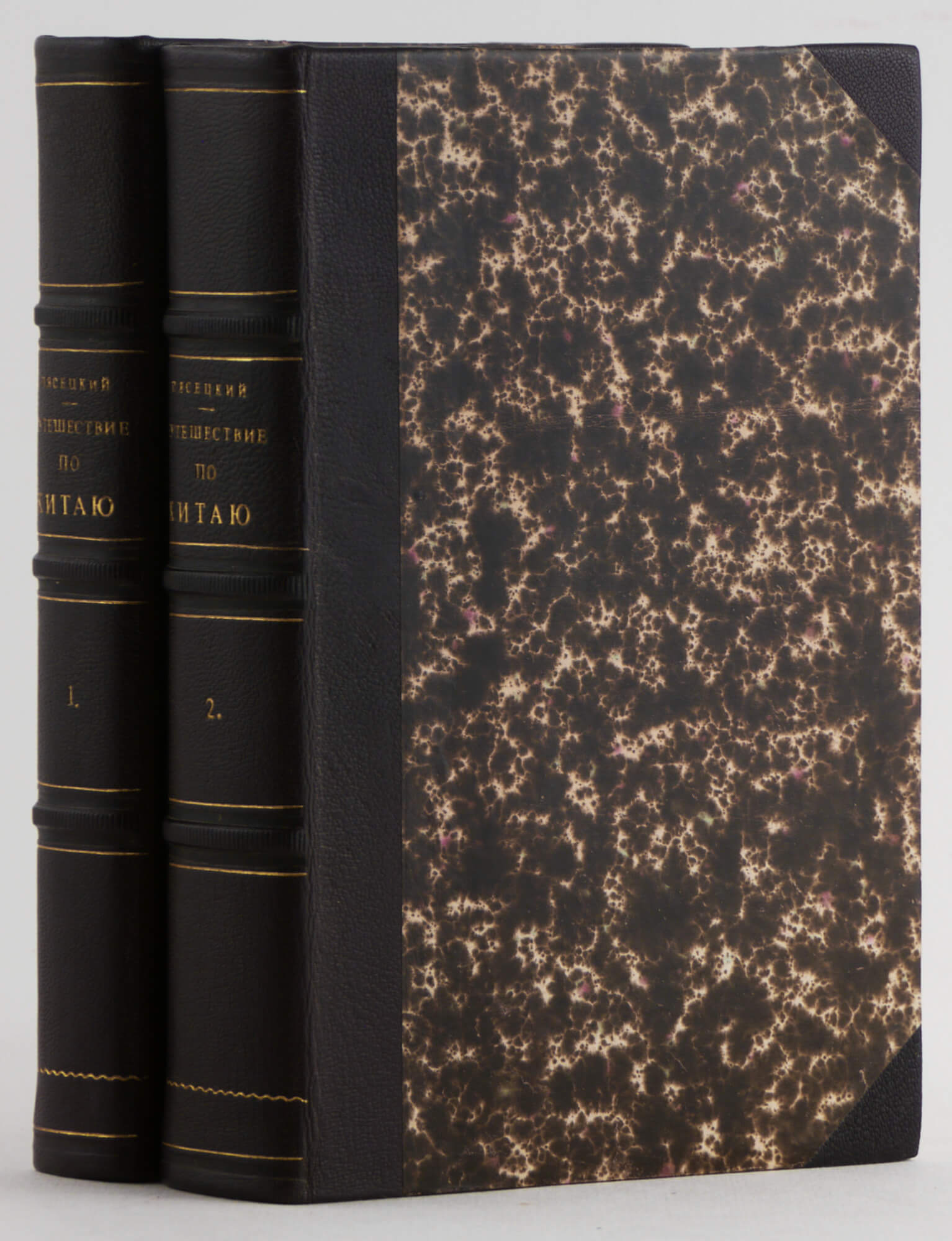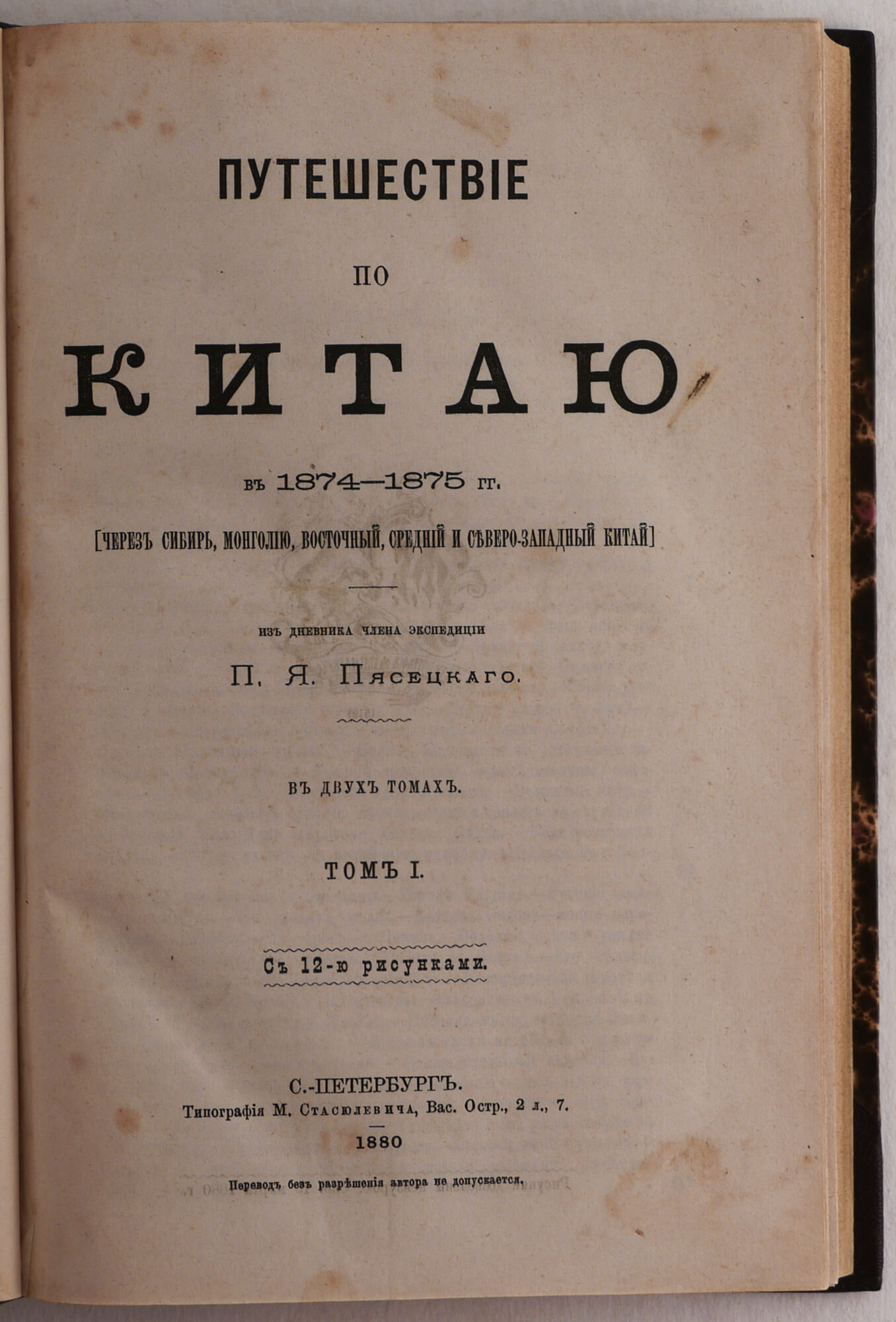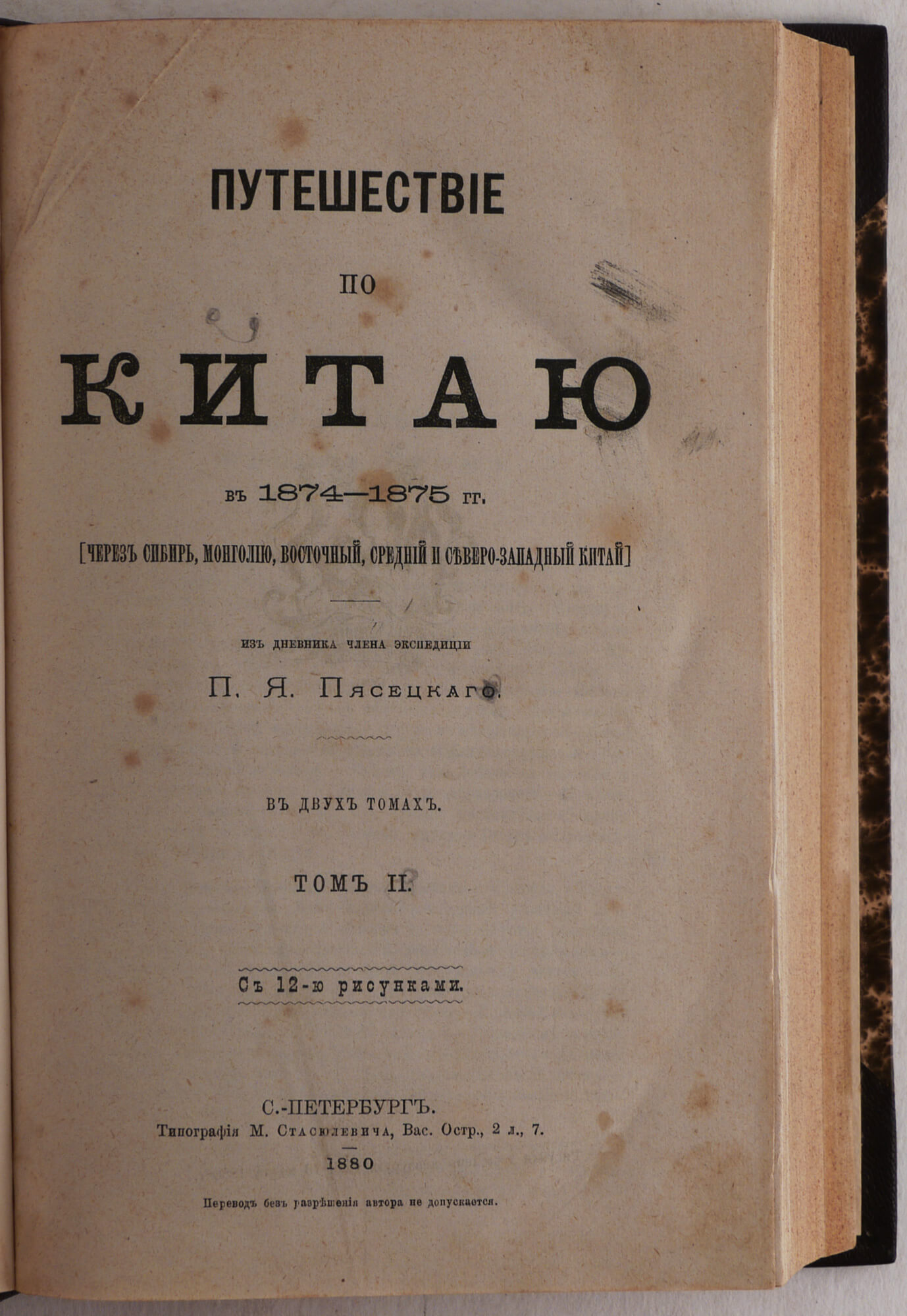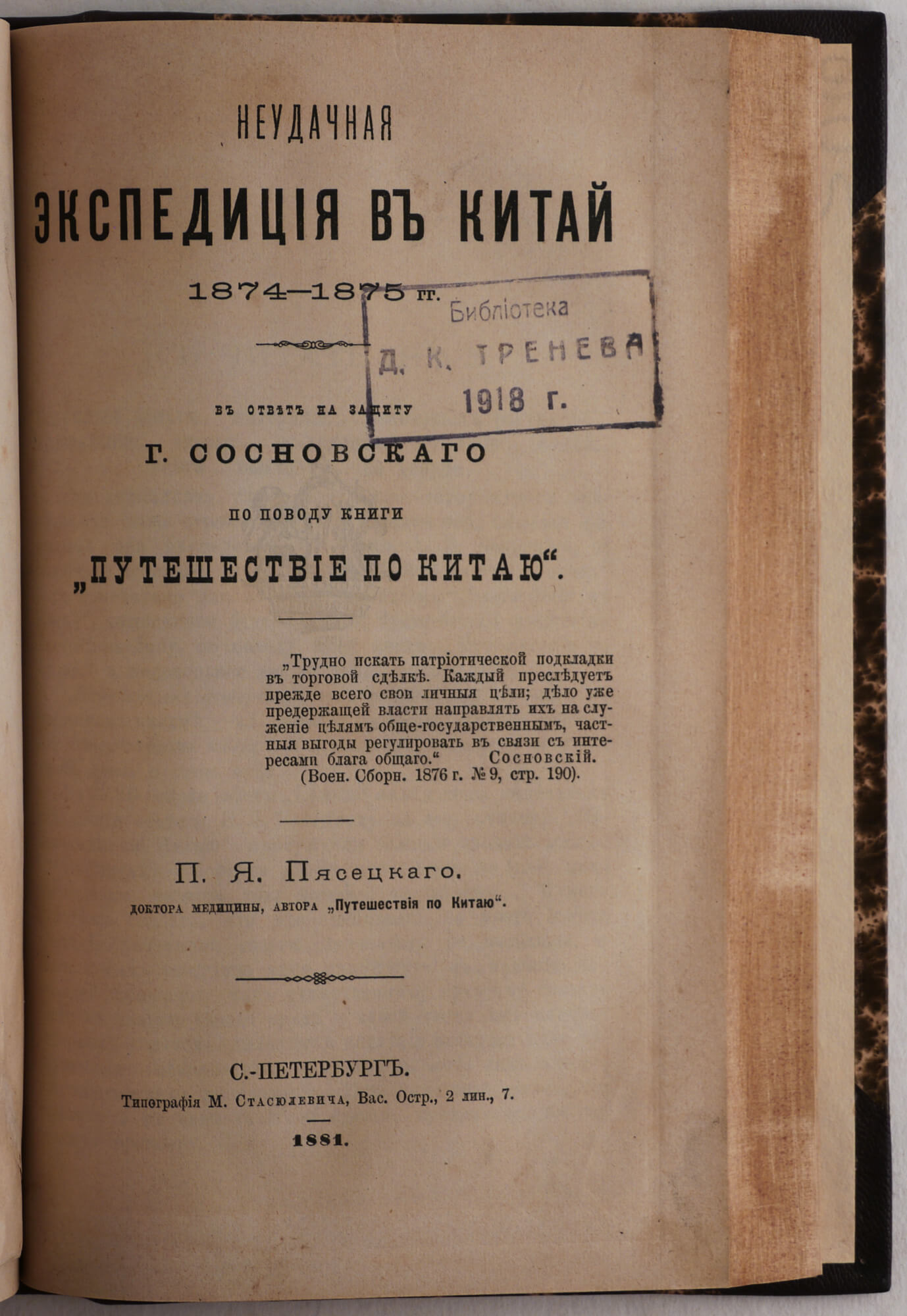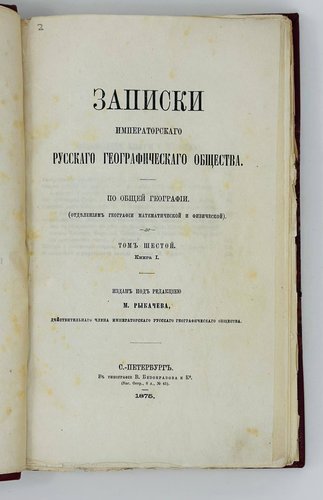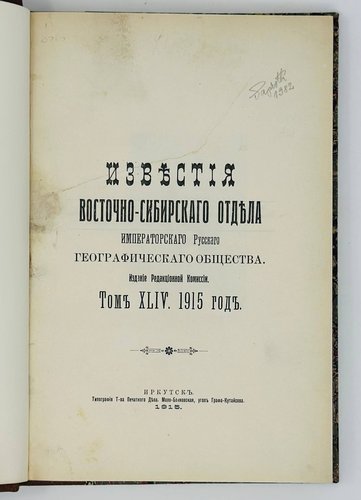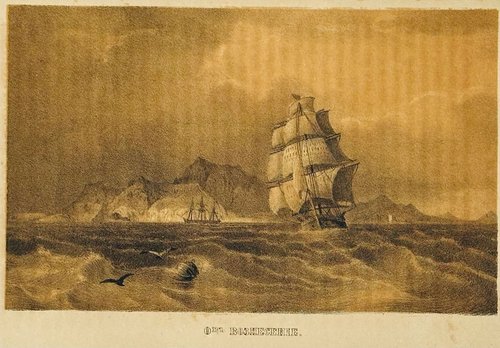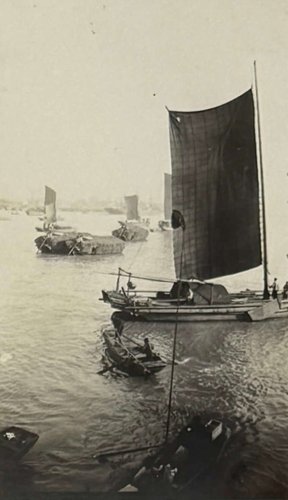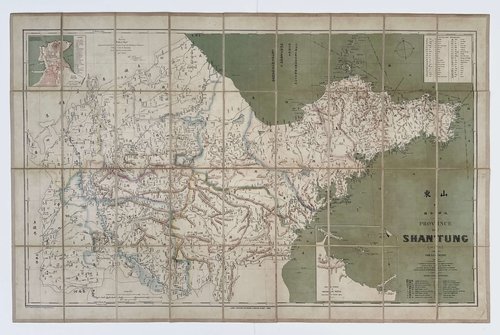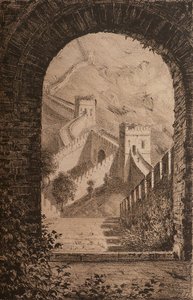
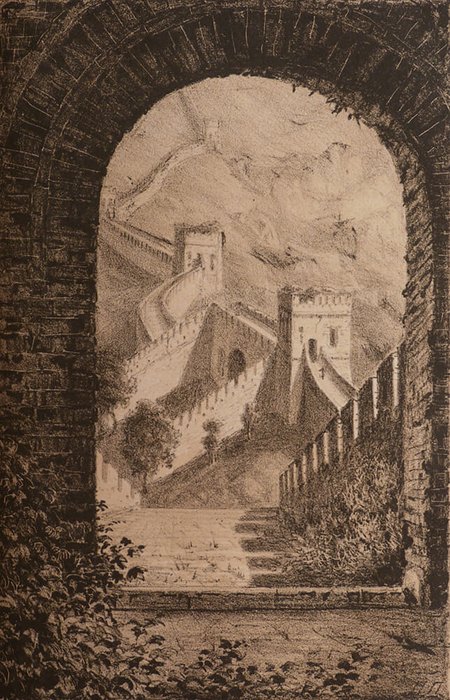

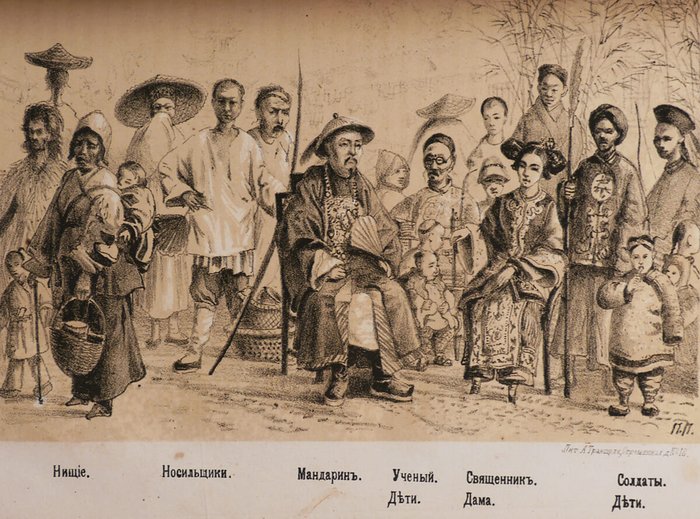

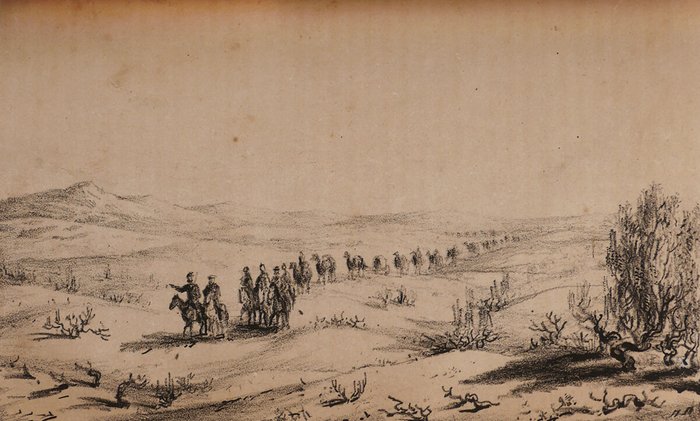
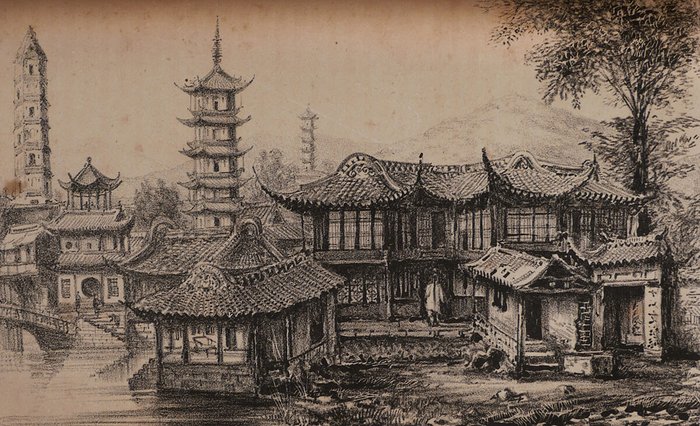
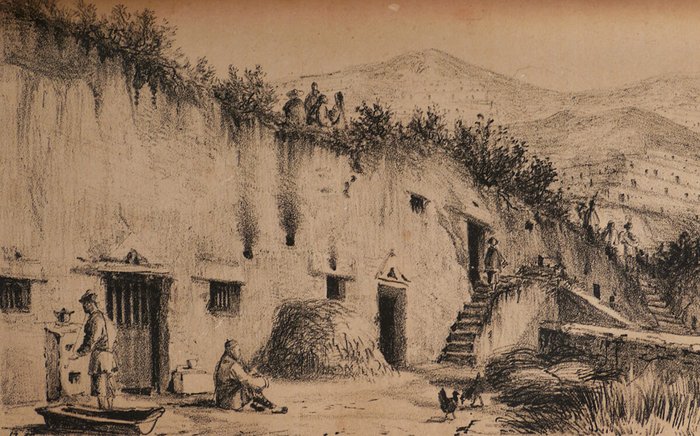
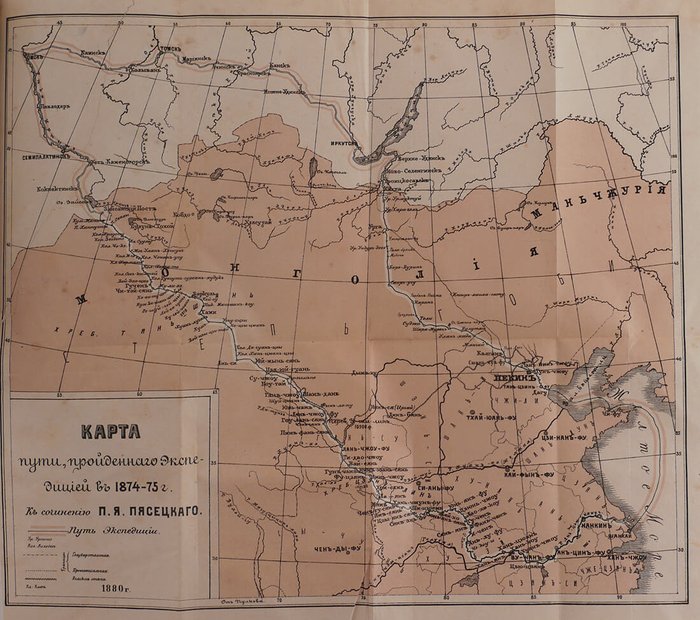

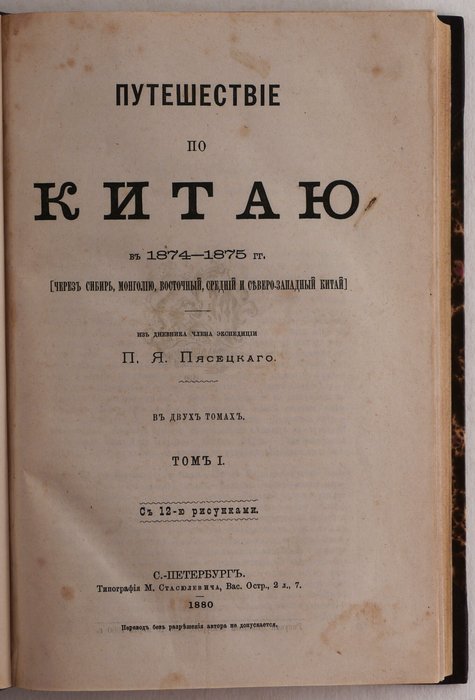

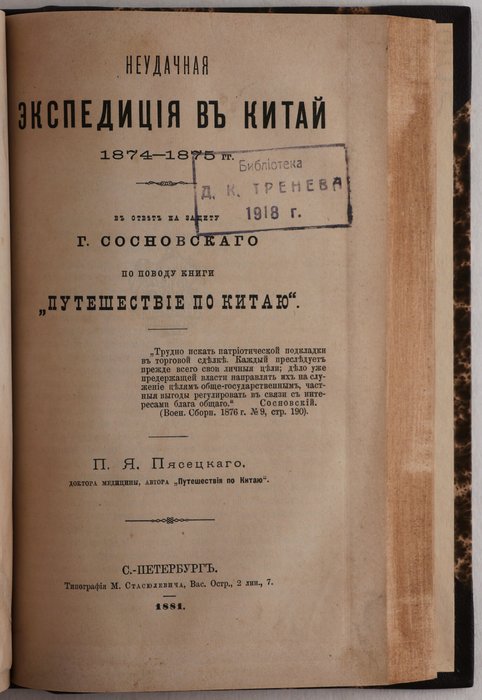
#R41
1880-1881
Three volumes bound in two bindings. [2 – t.p.], 560; [2 – t.p.], iii, 561-1122, 4, xviii; [2 – t.p.], 298, ii pp. 24x16 cm. With twenty-four tinted lithographed plates and a folding lithographed map at rear. Three volumes bound in two bindings. Private library stamp of D.K. Trenyov on the title page of the ‘‘Neudachnaya Ekspeditsiya’’. Period style half leather with marbled papered boards and gilt lettered titles on the spines. Text with occasional mild foxing, map with a tear neatly repaired, otherwise a very good copy.
First edition of a rare Russian imprint with only eight paper copies found in Worldcat.
Firsthand account of the 1874-75 Russian surveying expedition to the little-known areas of the northwestern China and the Gobi Desert under command of Captain of Imperial General Staff Yulyan Sosnovsky (1842-?). Amid the intensifying Great Game Russia was looking for the development of diplomatic and trade relations with China, as well as for the investigation of possible routes to Tibet. The 1870s saw several military reconnaissance expeditions organized by the Russian government, including an earlier one, led by Sosnovsky to the upper reaches of the Black Irtysh in northwestern China (1872-73).
The 1874-75 ‘scientific and trade’ expedition aimed to ascertain the shortest way from Western Siberia to the Sichuan province in southwestern China; to outline the best sites for prospective Russian trade, and to gather information about the Dugan Revolt in Western China (1862-77). The expedition party numbered nine people, including Yulian Sosnovsky, topographer Captain Zinovy Matusosky (1843-?), doctor and artist Pavel Yakovlevich Pyasetsky (1843-1919), photographer Adolf Boyarsky, translators and guards.
The expedition left Russia from the border town of Kyakhta in July 1874 and proceeded to Beijing via Ulan-Bator, Gobi Desert, and Kalgan (Zhangjiakou); went to Tianjin, took a steamer to Shanghai, and went up the Yangtse to Nanjing and Hankou. Then they followed the ancient Silk Road, going to the upper reaches of the Han River where the main survey started; visited Hanzhong and Lanzhou (where they crossed the Yellow River); followed the Great Wall of China to Suzhou (Gansu Province), and went across the western Gobi Desert to the Hami Oasis. Then they crossed Tian Shan Mountains, and proceeded northwest via Barkul (Zhenxi Fu) and Guzhen, arriving to the Lake Zaysan Russian border post in October 1875. As a result a new route to China was discovered which was over 2000 versts shorter than the previously known.
The book was written by the expedition doctor and artist Pavel Pyasetsky, and is illustrated with twenty-four lithographed plates after his original sketches made during his travels. He was a prolific artist and produced over a thousand sketches during the travel, which became the basis of a unique watercolour panorama ‘‘From the Middle China to Western Siberia’’ which measured 72 m. The main text is supplemented with a ‘List of plants, collected on the way from Fancheng to Zaysan border post (Provinces of Hubei, Shaanxi, and Gansu, and Mongolia)’; ‘List of drawings made during the travel and comprising the exhibition in the Imperial Academy of Arts in 1876’, and an article by N. Petrovsky ‘Scientific and trade expedition to China in 1874-75’; the folding lithographed map outlines the route of the expedition.
Pyasetsky’s book was awarded with the gold medal of the Russian Geographical Society. The book was quickly translated into French and English.
The second volume is bound with another work by Pyasetsky shedding light to the controversy which existed between the expedition members. In the main text Pyasetsky on numerous occasions accused the head of the party Sosnovsky in the abuse of power and expedition money; the ‘third’ part of the book is his passionate pamphlet bringing more facts proving Sosnovsky’s misconduct; in some copies it is bound together with the main text. A year later Sosnovsky published his own version of the events, thus continuing the ‘pamphlet war’ (Sosnovsky, Y. Ekspeditsiya v Kitai v 1874-75. St. Petersburg, 1882).
Overall an interesting Russian work on the Inner China with relations to the Great Game in Central Asia.

